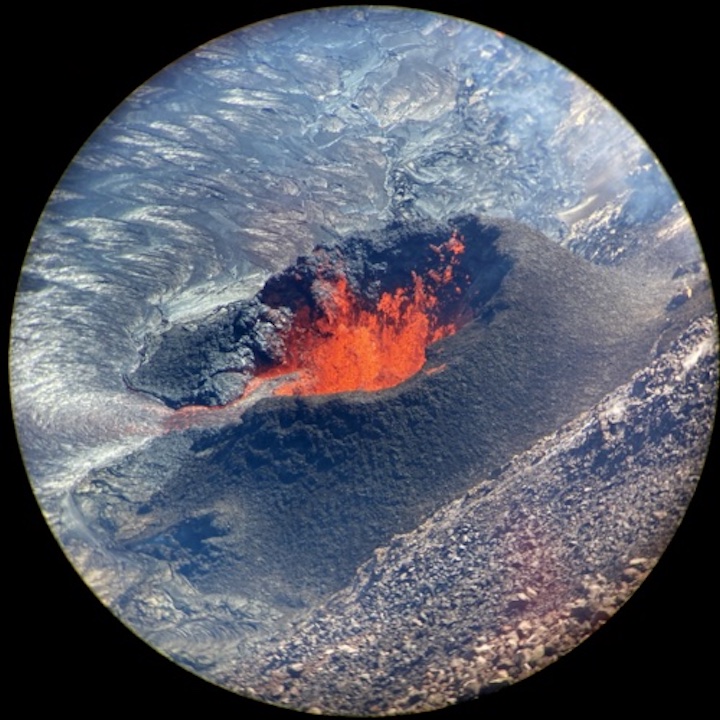Kīlauea Spews Over 4 Billion Gallons of Lava Since Start of September Eruption
Kīlauea volcano continues to erupt from a single vent in the western wall of Halemaʻumaʻu crater as of Tuesday, Oct. 12, 2021.
The eruption is contained within the crater. Since the lava emerged on Sept. 29, the USGS Hawaiian Volcano Observatory reports a total erupted volume of 4.2 billion gallons of lava as of Oct. 8.

According to HVO, field crews measured an increase of seven feet within the lava lake on Monday, Oct. 11. Since the eruption, the lake has risen 131 feet with a maximum elevation of 2,569 feet above sea level.
The western vent changed eruptive style from sustained fountain heights of 13 feet to more variable heights -up to 115 feet – observed by field crews on Oct. 11. The fountain has built a spatter cone with an approximately 33-foot wide opening facing east towards the lake. Lava is flowing into the lake through the spatter cone opening.
The central island and several of the smaller eastern islets from the 2020 lava lake are still above the lake surface along with an island of the 2020 western vent rampart in the northwest part of the lake. The lava lake is not level across its surface due to the location of the vent in the western end.
Areas closer to the vent are about 7-13 feet higher in elevation compared to the north and south part of the lake and 26 feet higher than the east end of the lava lake. Lava surface activity such as crustal foundering is seen on the western end of the lake and north and south of the central island but is no longer observed on the east end of the lake.
No unusual activity has been noted in the Kīlauea East Rift Zone. Ground deformation motion suggests that the upper East Rift Zone—between the summit and Puʻuʻōʻo—has been steadily refilling with magma over the past year. SO2 and hydrogen sulfide (H2S) emissions from Puʻuʻōʻō were below instrumental detection levels when last measured on January 7, 2021.
Seismicity and volcanic gas emission rates remain elevated.
Sulfur dioxide (SO2) emission rates remain high, with a measured emission rate of approximately 2,500 tonnes per day on October 11, 2021, slightly lower than the past few days. Summit tilt has changed to a slightly inflationary trend since the morning of October 10.
This new eruption at Kīlauea’s summit is occurring within a closed area of Hawai’i Volcanoes National Park. Therefore, high levels of volcanic gas are the primary hazard of concern, as this hazard can have far-reaching effects down-wind. Large amounts of volcanic gas—primarily water vapor (H2O), carbon dioxide (CO2), and sulfur dioxide (SO2)—are continuously released during eruptions of Kīlauea Volcano.
As SO2 is released from the summit, it reacts in the atmosphere to create the visible haze known as vog (volcanic smog) that has been observed downwind of Kīlauea. Vog creates the potential for airborne health hazards to residents and visitors, damages agricultural crops and other plants, and affects livestock. For more information on gas hazards at the summit of Kīlauea, click here. Vog information can be found here.
Additional hazards include Pele’s hair and other lightweight volcanic glass fragments from the lava fountains that will fall downwind of the fissure vents and dust the ground within a few hundred yards of the vent(s). Strong winds may waft lighter particles to greater distances. Residents should minimize exposure to these volcanic particles, which can cause skin and eye irritation.
Other significant hazards also remain around Kīlauea caldera from Halemaʻumaʻu crater wall instability, ground cracking, and rockfalls that can be enhanced by earthquakes within the area closed to the public. This underscores the extremely hazardous nature of Kīlauea caldera rim surrounding Halemaʻumaʻu crater, an area that has been closed to the public since early 2008.













